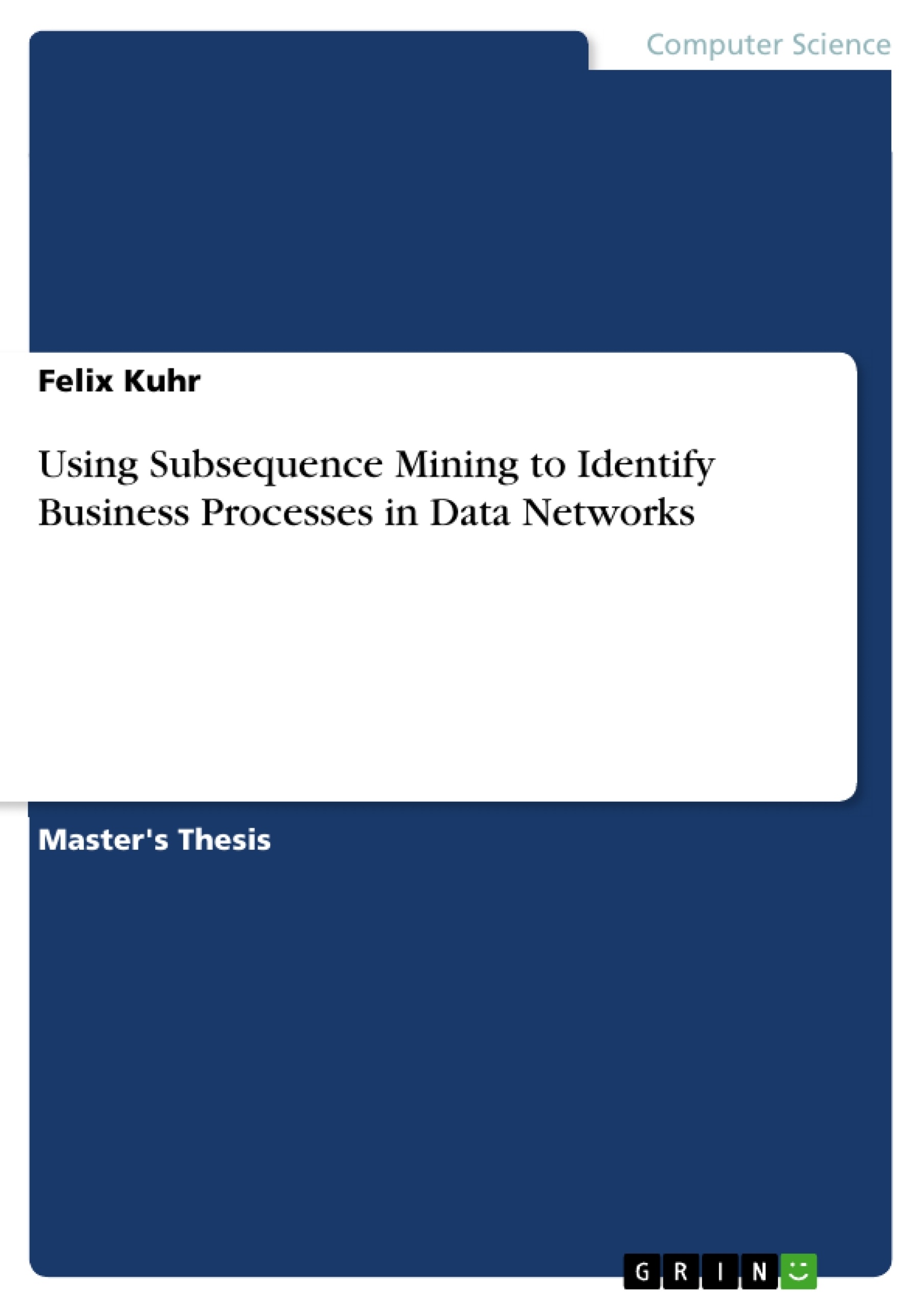To manage business processes, companies must previously define, configure, implement
and enact them. Analysts try to identify companies’ business processes. However, large
companies might have complex business processs (BPs) and consist of many business
units. Therefore, classical business process modelling hardly scales. Both, companies and
analysts are interested in automated approaches for business process modelling, saving
time and money. Today’s business process analysts often use process mining techniques to
extract company’s business processes by analyzing event logs of applications. This technique
has its limitations, and is strongly dependent on the kind of log files of deployed
applications. By designing our mission oriented network analysis (MONA) approach using
algorithms having polynomial complexity, we show that identification of business processes
is tractable. Identification of related tasks which constitute business processes is based
on analysis of communication patterns in network traffic. We assume that today’s business
processes are based on network-aided applications. Our software presents identified
business processes using business process modelling notation.
Inhaltsverzeichnis (Table of Contents)
- Introduction
- Motivation
- Background
- Related Work
- Challenges
- Requirements
- Network Service Dependency Discovery
- Technical Description
- Network Model
- Network Dependency Analysis
- Business Processes
- Implementation
- Flow Extraction
- Subnetwork Identifier
- Potential Indirect Dependency Generator
- Indirect Dependency Calculator
- Stream-based MONA
- Representation of Tasks
- Technical Description
- Evaluation
- Ground Truth
- Threshold Estimation
- Validation of Threshold
- Comparative Evaluation
- Orion
- Sherlock
- NSDMiner
- Sensitivity Analysis
- MONA versus Orion
- Ground Truth
- Conclusion
- Summary
- Future Work
Zielsetzung und Themenschwerpunkte (Objectives and Key Themes)
The main objective of this work is to develop an automated approach for identifying business processes in complex organizations. This approach utilizes network communication patterns to discover dependencies between tasks and subsequently group them into business processes. The core focus lies in addressing the limitations of traditional process mining methods, which heavily rely on application event logs, by exploring a network-based approach. This research aims to demonstrate that the identification of business processes is feasible through an analysis of network traffic patterns.
- Automated business process identification
- Network-based analysis for discovering dependencies
- Addressing limitations of traditional process mining methods
- Feasibility of identifying business processes from network traffic
- Efficiency and scalability of the developed approach
Zusammenfassung der Kapitel (Chapter Summaries)
The introduction provides context and sets the stage for the research, outlining the importance of identifying business processes in modern organizations. It highlights the challenges faced by traditional methods and introduces the need for an automated approach. Chapter 2 delves into the motivation behind this work, reviewing relevant background information, existing related research, and challenges in the field. It also outlines the requirements for a successful business process identification system. Chapter 3 presents the core of this work: the development of a network-based approach for identifying business processes. It outlines the technical details of the approach, including the network model, dependency analysis, and the implementation of the proposed method. Chapter 4 examines the evaluation of the developed approach, comparing its performance against existing methods and analyzing its sensitivity. The chapter concludes with a discussion of the strengths and limitations of the proposed method. While the conclusion, final chapter, and appendices are not covered in this preview, they provide further insights into the research, summarize the findings, and discuss potential future directions.
Schlüsselwörter (Keywords)
This research revolves around the concepts of business process identification, network analysis, process mining, network service dependency discovery, automated approaches, and network communication patterns. The focus lies in utilizing a novel network-based approach to address the limitations of traditional process mining methods, particularly in the context of large and complex organizations. The developed approach leverages network traffic analysis to identify dependencies between tasks and ultimately reconstruct business processes.
- Arbeit zitieren
- Felix Kuhr (Autor:in), 2016, Using Subsequence Mining to Identify Business Processes in Data Networks, München, GRIN Verlag, https://www.grin.com/document/351074



